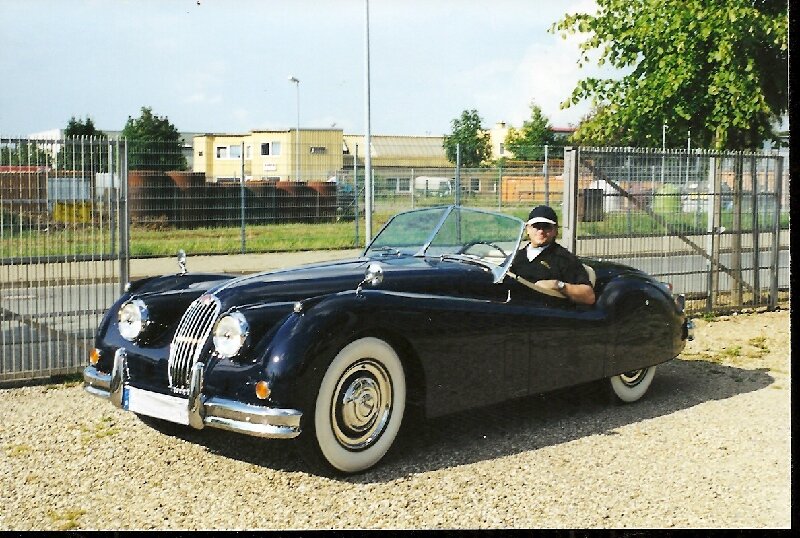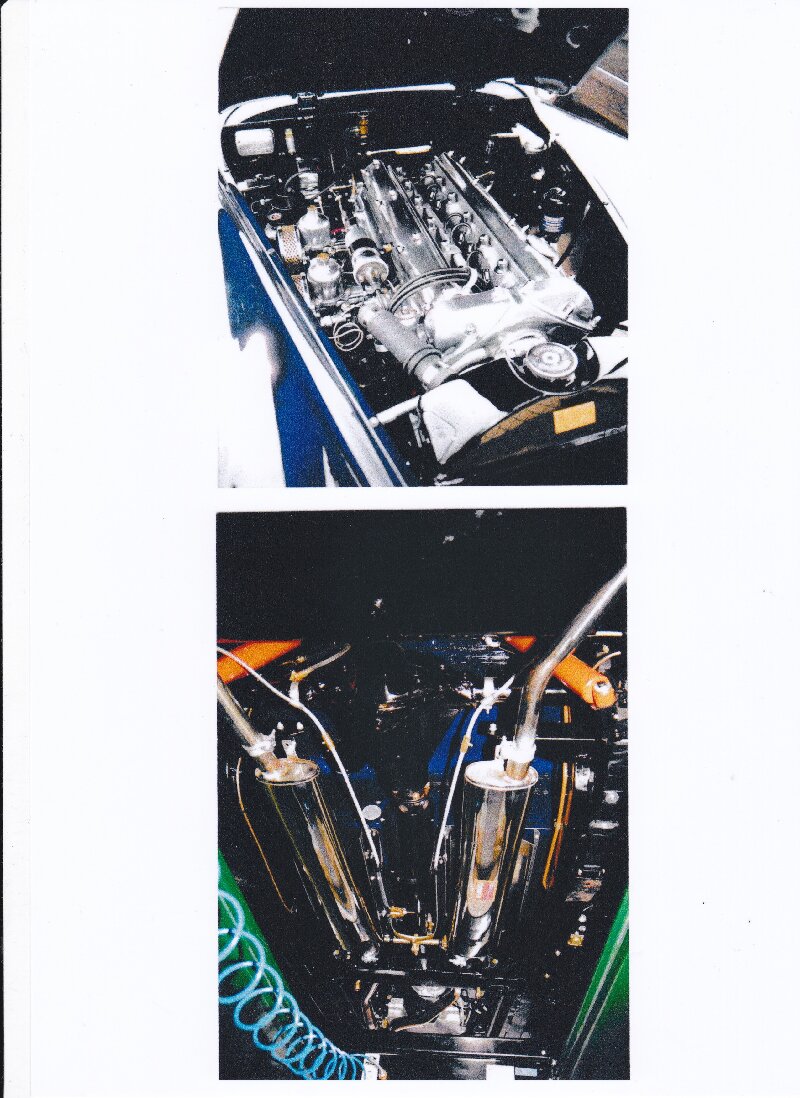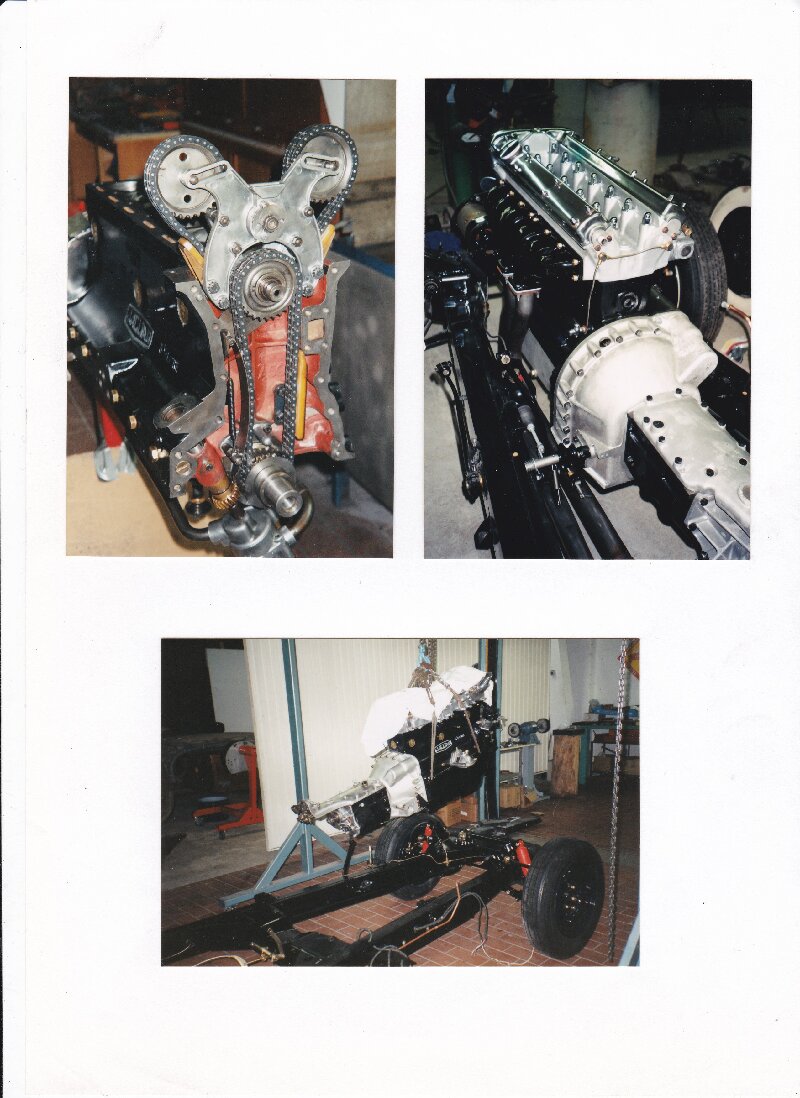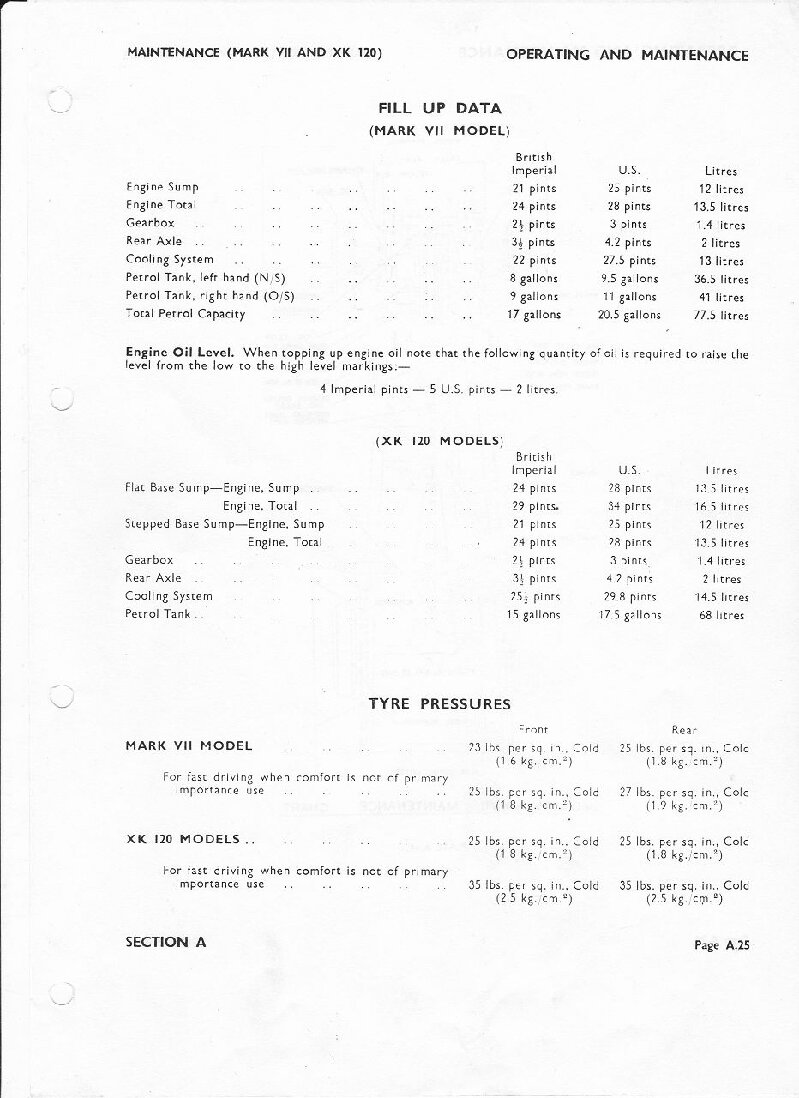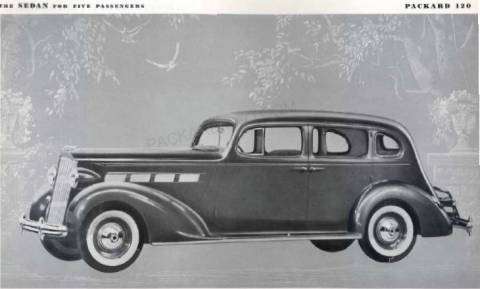|
Re: BigKev's 1937 115-C Convertible Coupe
|
||||
|---|---|---|---|---|
|
Webmaster
|
Quote:
It was after it warmed up. So, the only airflow through the radiator was whatever the fan was pulling. The Packard radiator core is significantly larger than the original Jaguar core.
Posted on: 2024/1/12 15:08
|
|||
|
-BigKev
1954 Packard Clipper Deluxe Touring Sedan -> Registry | Project Blog 1937 Packard 115-C Convertible Coupe -> Registry | Project Blog |
||||
|
||||
|
Re: BigKev's 1937 115-C Convertible Coupe
|
||||
|---|---|---|---|---|
|
Forum Ambassador
|
I am curious if there was a weak spot or coponent in the Jag 6 cyl engine that was prohibitively expensive to repair or maybe a part was very hard to find or NLA for replacement. In the late 90s or so a friend had an independent garage where I would often hang out and I recall at least two 6 cylinder Jags of late 60s to maybe 70s vintage come into his shop. For whatever reason owners did not want or could not fix the Jag engine so they had Chevy V8 crate engines installed. Friend said even with the extra work replacing with the Chevy engine was much cheaper than repair but don't recall if he ever said why.
Posted on: 2024/1/12 16:52
|
|||
|
Howard
|
||||
|
||||
|
Re: BigKev's 1937 115-C Convertible Coupe
|
||||
|---|---|---|---|---|
|
Home away from home

|
Hi Howard,
I think the weak point with this engine is that this engine needs care and attention. As a long stroker (?), who lubricates his cylinders by immersing the crank drive in the oil sump, he needs every drop of oil up to the maximum level. The assumption that 4 gal. There is enough oil to avoid having to constantly worry about the oil level... is wrong. Does anyone remember the 50s and 60s when it was common for the gas station attendant to always ask if he should check the oil level? There was a reason for that at this time. Lubrication technology, the combustion of part of the oil and the incontinence of the engines, which was not uncommon at this time. Comparing this engine to a 1950s-60s small block is... like comparing a farm horse to a racehorse. This Jaguar 6 cylinder is a reliable and technically advanced power unit for its time. It's not without reason that this engine won the 24 Hours of Le Mans 3 years in a row (1951-53). I personally know 3 Jaguar owners who didn't pay this engine the attention it needed. The consequence of oil levels being too low was piston seizing. And yes, ... that's certainly more expensive than converting a Chevy small-block. Especially since only a few workshops in the USA have dared to overhaul this engine. It's really not rocket science. However, intensive information about design features in the engine is required. For example, pins/bolts in the area of the chain control should not be lost and should not be forgotten to reinsert them during assembly. But there are very good books in English that describe all of these problems in great detail. The parts necessary to overhaul the engine have been available at all times and are in no way more expensive than comparable parts from GM. But the time required by an American workshop without experience with these engines was definitely significantly higher than that of branded workshops, which simply cannot be found on every corner in the USA. And a Porsche, Mercedes, BMW, or Jaguar owner/driver basically has plenty of money and is then presented with corresponding invoices/cost estimates. It is of course much easier and more profitable to install a small block. A friend of mine brought such an XK 140 OTS conversion from California. And an “original” Jaguar engine. It then turned out to be a 3.8 liter MKII engine that could only be scrapped. I then restored this car to its original condition, thereby multiplying its value on the European market. Finally, maybe just this much... the SU carburetors should be in good mechanical condition. The vacuum pistons should be able to work cleanly and freely. The needles in these pistons should actually belong to this engine and this type of carburetor. There are a multitude of needles that at first glance all look alike but are not necessarily so. There are tables and lists. The same applies to the main jets. The float level should be set correctly. New needle valves are a must. If the float or nail is hanging, the pump may be pumping gasoline through the overflow pipes under the car. The carburettors must absolutely be synchronized. Everything should be as correct as possible because only then will the engine work cleanly and not emit any black clouds. Karl
Posted on: 2024/1/13 11:08
|
|||
|
||||
|
Re: BigKev's 1937 115-C Convertible Coupe
|
||||
|---|---|---|---|---|
|
Webmaster
|
100% sure this motor doesn't hold 4 gals of oil. I've drained and refilled several times. Perhaps 7 quarts or so.
EDIT: I just checked the specs for an XK 3.8L and the oil capacity per the Jaguar manual is 15-1/2 pints. So about 7-3/4 quarts or 1.93 gallons.
Posted on: 2024/1/13 11:49
|
|||
|
-BigKev
1954 Packard Clipper Deluxe Touring Sedan -> Registry | Project Blog 1937 Packard 115-C Convertible Coupe -> Registry | Project Blog |
||||
|
||||
|
Re: BigKev's 1937 115-C Convertible Coupe
|
||||
|---|---|---|---|---|
|
Home away from home

|
Kevin,
you are right, but then you got an engine out of the 1950th and early 60th. I think the E-Type 2+2 had a oil capacity of a little bit over 2 Gal. But my Engine ... and that was where I was talking about... has 13,5 ltr. and that is .... ok not 4 Gal. .... but 3,55 gal. I should better look in my Books. But thats what I remember rouhgly as I wrote this. Karl
Posted on: 2024/1/13 12:55
|
|||
|
||||
|
Re: BigKev's 1937 115-C Convertible Coupe
|
||||
|---|---|---|---|---|
|
Forum Ambassador
|
Thanks for the info on the Jag engine. It makes good sense that if someone was a bit derelict in checking the oil level along with having a lead foot as I know one of the Jag owners did have, then major engine problems could have occured. I am sure the Chevy engine was a serious downgrade and only done due to expense of finding parts and repairing the original. No idea how hard it might have been 20 or 30 years ago to find aftermarket foreign engine parts but finding the real items were most likely not that easily done either and very expensive if you did.
Posted on: 2024/1/13 13:18
|
|||
|
Howard
|
||||
|
||||
|
Re: BigKev's 1937 115-C Convertible Coupe
|
||||
|---|---|---|---|---|
|
Webmaster
|
I suffered through a 42f garage (-6f outside with a -22 winchchill) to get a few things done.
Made the much needed heat shield to protect the steering box and master cylinder from the exhaust collector. This is made of 16ga steel shell with an inner lining of 2000f rated aluminum faced insulation. 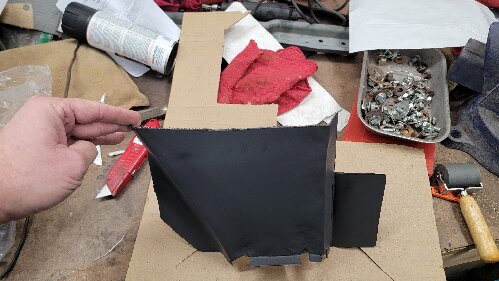 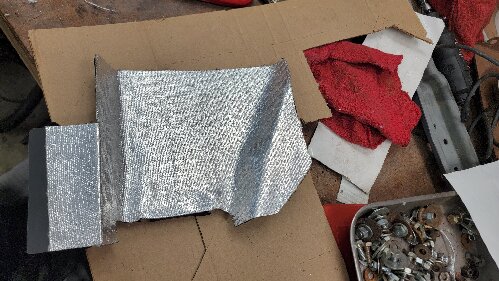 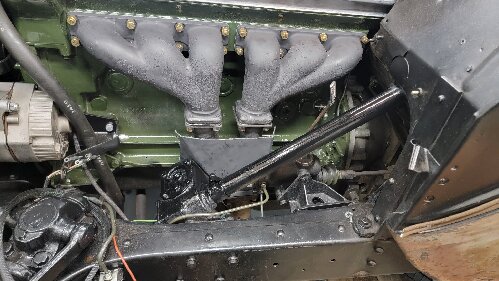 The shell was painted with the same paint I used on the manifolds. It all pretty tight but nothing is touching and there is an air gap between everthing. I replaced the horn column wire as it was original and had insulation flaking off where it exits the steering box. I also cleaned and bent the horn button contact prongs back into place as I was getting intermittent contact before when trying to push the horn button.
Posted on: 2024/1/15 16:04
|
|||
|
-BigKev
1954 Packard Clipper Deluxe Touring Sedan -> Registry | Project Blog 1937 Packard 115-C Convertible Coupe -> Registry | Project Blog |
||||
|
||||
|
Re: BigKev's 1937 115-C Convertible Coupe
|
||||
|---|---|---|---|---|
|
Home away from home
|
It looks like a nice and tidy job! Will it keep its clearance with engine torque upon acceleration? I look forward to seeing the temperature readings of the gearbox once it’s back up and running. As for the horn and the intermittent contact, just leave the wire as it is so that it will honk automatically around corners!
Posted on: 2024/1/15 16:32
|
|||
|
||||
|
Re: BigKev's 1937 115-C Convertible Coupe
|
||||
|---|---|---|---|---|
|
Webmaster
|
We shall see how it performs. My other option was exhaust header wrap. Which I read is pretty effective but can degrade the exhaust tubing underneath where it's wrapped.
Posted on: 2024/1/15 17:05
|
|||
|
-BigKev
1954 Packard Clipper Deluxe Touring Sedan -> Registry | Project Blog 1937 Packard 115-C Convertible Coupe -> Registry | Project Blog |
||||
|
||||

 JagXK140.jpg (335.41 KB)
JagXK140.jpg (335.41 KB)